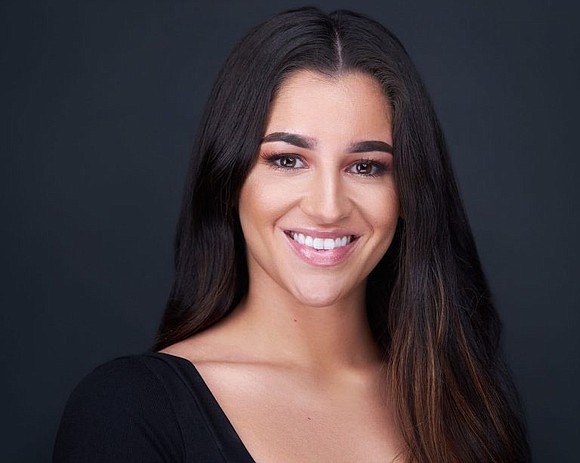How Fashion Brands Can Best Navigate a Burgeoning Influencers Market
By Lyara Lobo | 7/6/2023, 11:08 a.m.
Welcome to the era of influencer-driven fashion, where the power of social media meets the artistry of self-expression. These online tastemakers have captured the attention and following of millions, transforming the way people discover, engage with, and purchase fashion products. From their intricately curated feeds to authentic endorsements, influencers have become the new arbiters of style, wielding the ability to shape trends and catapult brands into the social media spotlight.
In recent years, fashion brands have been turning to influencers as their key collaborators, harnessing their influence to attract new customers and boost the sales of their products, and partnerships with renowned celebrities and influencers in the fashion industry have been on a noticeable upswing with no end in sight. According to Grand View Research, global fashion influencer marketing is expected to expand by a remarkable 35.7% from 2020 to 2027.
Managing influencers effectively requires a strategic approach that goes beyond mere partnerships. The elements of authenticity, relevance, engagement, creativity, and long-term partnerships are what drive successful influencer collaborations. By mastering these fundamentals, fashion brands can utilize the full potential of influencers; channeling their reach, credibility, and connection with their followers to drive brand growth and awareness, as well as establishing lasting bonds with their target audience.
Authenticity
First, we look at authenticity when managing influencers in the fashion industry. Companies must carefully seek out influencers whose style and values align with their brand identity. The key lies in choosing an influencer who possesses a persona genuine to the brand, allowing for a seamless mesh of the brand into the influencer’s content.
In more recent times, there has been a growing demand for influencer transparency; brands and consumers alike want to see more authentic and ethical practices from influencers. Fashion brands are responding to this demand by shifting away from paying top-dollar for sponsored content produced by top-tier influencers and instead are collaborating with influencers with lower follower counts with more authenticity in their content.
By doing so, companies can cultivate an aura of trust and credibility around their brand, resonating with their target audience in a more relatable way. Authenticity ensures that the influencer’s endorsement of the brand feels organic and natural to the viewer, enhancing the overall effectiveness of the partnership.
Relevance
In addition to authenticity, relevance is another key factor in collaborating with influencers in the fashion industry. Brands should work with influencers whose followers correspond with their target demographic.
By leveraging the influencer's established relevance, fashion brands can tap into an engaged and receptive audience, effectively expanding the brand's visibility and creating a genuine connection with potential customers. Collaborating with influencers who boast a strong following within the brand’s niche ensures that the content reaches its intended audience.
Engagement
Once the content is posted by the influencer, brand’s look to maximize engagement among the target audience, i.e. the influencer’s followers. High engagement rates are indicative of an influencer’s ability to captivate and connect with their followers. Fashion brands should search for influencers whose content generates substantial engagement, as this demonstrates genuine interest and trust in opinion from their audience.
Some brands even look into collaborations with content creators who only have 1,000 to 100,000 followers, known as micro-influencers. Micro-influencers focus on a specific niche and are generally regarded as an industry expert or topic specialist. While these influencers have significantly less of a following than the industry standard, their audiences exude much higher engagement levels and have a more personal connection towards the influencer, providing the opportunity for fashion brands to impact their target audiences much more effectively.
Brands can tap into the influencer’s ability to drive conversations, spark excitement, and inspire action among their audience through a social media campaign. By way of meaningful engagement, fashion brands can amplify their message, enhance brand loyalty, and ultimately boost conversions, ensuring a mutually beneficial collaboration with influencers.
Creativity
In order for a brand’s content to produce high levels of engagement, it should be a testament of their influencer’s unique sense of creativity. Influencers hold a deep understanding of their audience and have the innate ability to create content that resonates with them.
Fashion brands should empower influencers with creative freedom, enabling them to devise unique and captivating ways to showcase their products. By allowing influencers to let their creativity shine, fashion brands can break through the noise, stand out in a crowded market, and develop an emotional connection with their target audience.
Long-term Partnership
Lastly, when managing influencers in the fashion industry, it is essential for a brand to build enduring, long-term relationships with their influencers rather than just one-off collaborations. A lasting relationship with the brand would allow for influencers to develop an in-depth understanding of the brand’s ethos, products, and target audience; further enhancing the quality and effectiveness of their content. Long-term collaborations also foster consistency for a brand’s messaging; a familiar face builds brand loyalty for customers, thus creating long-term customers as a result of a long-term relationship with the influencer.
The influencer, to an extent, is the personification of the brand, and must represent the brand in the best way possible. By combining all of the elements listed, brands can run successful influencer campaigns & reach new audiences and networks with revenue driving results. As the fashion industry continues to evolve, the management of influencers will remain a pivotal aspect, paving the way for innovative and impactful collaborations that will shape the future of fashion.




